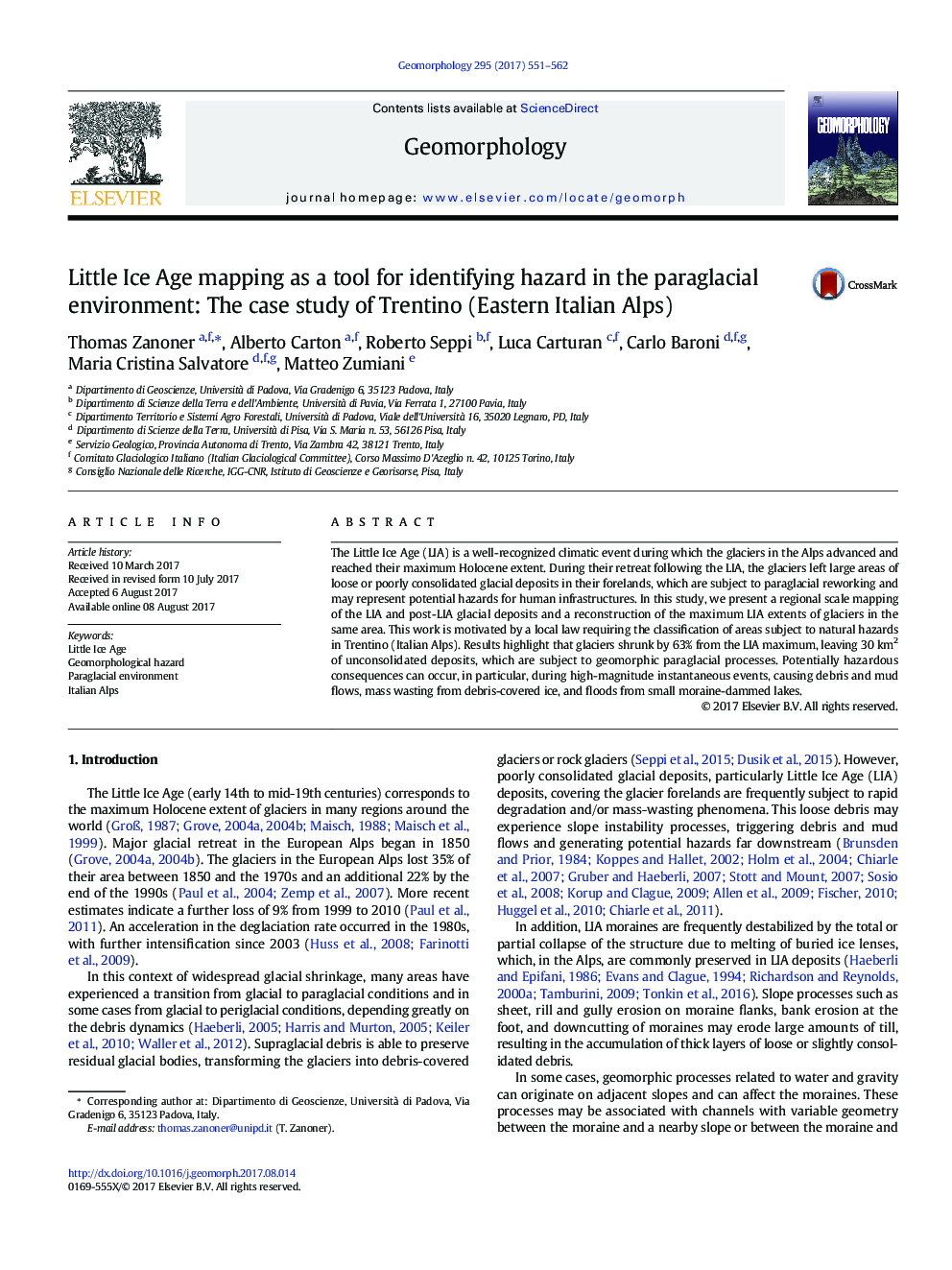| Article ID | Journal | Published Year | Pages | File Type |
|---|---|---|---|---|
| 5780775 | Geomorphology | 2017 | 12 Pages |
Abstract
The Little Ice Age (LIA) is a well-recognized climatic event during which the glaciers in the Alps advanced and reached their maximum Holocene extent. During their retreat following the LIA, the glaciers left large areas of loose or poorly consolidated glacial deposits in their forelands, which are subject to paraglacial reworking and may represent potential hazards for human infrastructures. In this study, we present a regional scale mapping of the LIA and post-LIA glacial deposits and a reconstruction of the maximum LIA extents of glaciers in the same area. This work is motivated by a local law requiring the classification of areas subject to natural hazards in Trentino (Italian Alps). Results highlight that glaciers shrunk by 63% from the LIA maximum, leaving 30Â km2 of unconsolidated deposits, which are subject to geomorphic paraglacial processes. Potentially hazardous consequences can occur, in particular, during high-magnitude instantaneous events, causing debris and mud flows, mass wasting from debris-covered ice, and floods from small moraine-dammed lakes.
Keywords
Related Topics
Physical Sciences and Engineering
Earth and Planetary Sciences
Earth-Surface Processes
Authors
Thomas Zanoner, Alberto Carton, Roberto Seppi, Luca Carturan, Carlo Baroni, Maria Cristina Salvatore, Matteo Zumiani,
